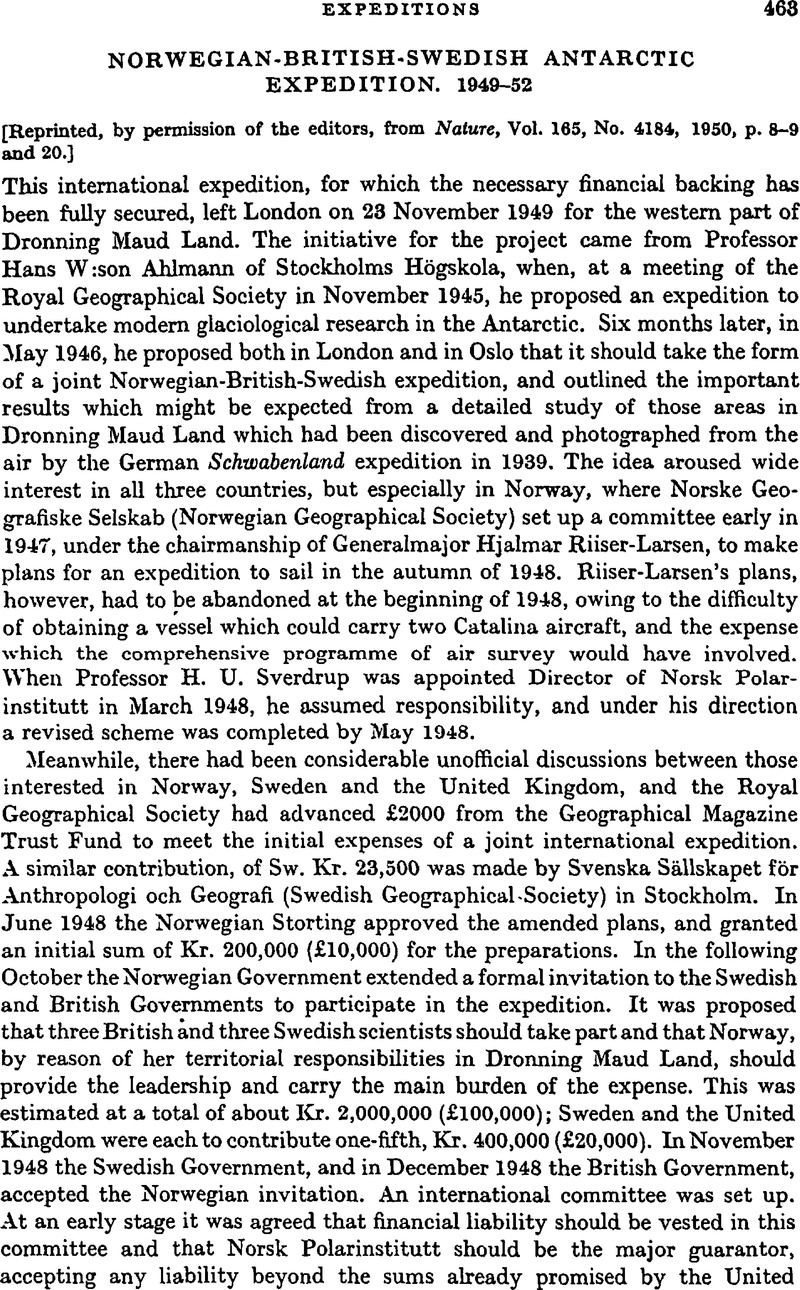Published online by Cambridge University Press: 27 October 2009

* Former members of the Falkland Islands Dependencies Survey.
1 Since the above note was written, information has been received from the Thorshovdi that during the voyage fifteen dogs have died of an as yet unidentified disease. Of the forty-five others, which were also infected, thirty-nine have completely recovered. The loss of so many dogs is serious, but it appears that there is now little probability of further deaths from this cause. Huskies are highly susceptible to bacterial and virus infections. All of them had been inoculated against distemper, and eight out of thirty-one from the Falkland Islands Dependencies were lost as a result of an outbreak of hard pad disease before they left England. It seems possible that the latest infection originated with the remaining dogs which came from East Greenland and Spitsbergen.